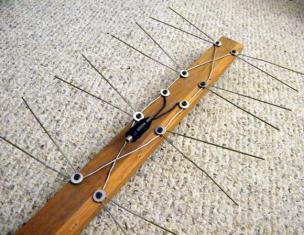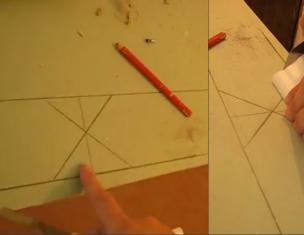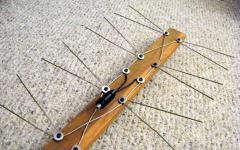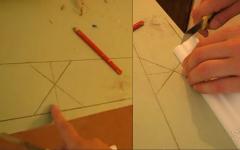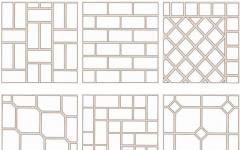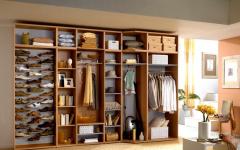Floor finishing is the completion of a complex of work on the arrangement of the supporting surface of the residential premises. For its device, various materials apply, but one of the most popular and to this day is laminate. It has a presentable appearance, rather durable, easy to clean and cleaning. Easy installation technology allows you to put it with your own hands.
Each coating is characteristic of certain properties and requires the appropriate surface for installation. In our case, the foundation requires such qualities:
- Practically perfectly smooth surface, so that the finish coating does not "breathe." This leads to its loosening during operation.
- Increased wear.
- Heat insulating properties.
- Soundproofability, if the floor is not on the first floor.
- Moisture resistance.
There are differences in the technology of manufacturing the base intended for the warm floors. The subtlety of the process depends on which method of insulation is scheduled.
Black screed manufacturing technology
This is a series of consecutive actions that allow you to arrange a reliable base for the finish coating. They are performed in the following order:
- Inspection of the surface plates of overlapping, sealing chosel. When cracks are detected on the surface. They must be cleared and close with cement mortar.
- Carefully remove the construction garbage and dust using a building vacuum cleaner.
- On the perimeter of the walls, stick a damper tape to the height of the finished floor. Elastic tape will serve as a compensating device with heat expansion of the screed during operation.
- Steam protection device. To do this, use a polyethylene film with a thickness of 200 microns. The joints must be performed with the adoption of about 12 - 15 and glue them with scotch. At the same time, you need to look at the walls on the height of the first floor.
- Put the reinforcement grid. To create a gap between it and overlap slabs, you need to use lining. The easiest to use pieces of broken bricks for this. Applying wooden linings should be avoided - they are subsequently rotated and emptiness is formed in the screed. The second layer of fittings is placed in the same way.
- Install beacons to align the screed layer. You can use any metal profiles or wooden bars. The main requirement is a flat edge.
- Preparation of concrete mix. It should be brand M300. For stirring, you can use a drill with a special nozzle, but it is better to rent a household concrete mixer.
- In the manufacture of sex in the conditions of a private house or apartment, two people are enough to perform work, one of which is preparing a solution and gives it to the place of installation, the second decides and lines the screed by the Rule of Lighthouses.
- After partial rejection of the concrete - approximately 3 days, you need to remove beacons and grout surface. The location of the lighthouses after their removal must be selected by cement mortar. This operation will allow you to get a smooth horizontal surface of the screed.
- A complete rejection of concrete occurs within 28 days, after which you can continue to work. This period can be significantly reduced if you use a semi-dry tie, which will be ready for work after 7 to 9 days.

Tool for tie device
To fulfill concrete work, you will need tools:
- The tank with a capacity of about 40 liters for the preparation of the solution.
- Shovel Soviet.
- Buckets.
- Trowel.
- Rule.
- The pin is to attach a layer of concrete when laying to get rid of air bubbles.
- Rule - milking concrete for lighthouses.
- Laser level - to install and control the location of beacons.
- Sketch for grouting surface screed.
It is possible to use other tools and devices, depending on the professional skills of performers.
Alignment of the surface of the floor
Given the features of the finishing coating, you need to get a practically perfect smooth horizontal surface of the base.
For this purpose, a levetling screed is used. The composition is prepared simply dilution of the finished dry mixture with water. Attention! It is important to accurately fulfill the manufacturer's recommendations, especially on the dosage of water.

The amount of solution for a leveling screed can be easily calculated, multiplying the floor area on the thickness of the screed. Depending on the quality of the base surface, the thickness of the screed is selected in the range of 4 - 8 mm.
To give the screed of additional strength characteristics, a fibrous reinforcing chip is added to the solution. Elasticity can be enhanced by additional plasticizer.
The solution is prepared in a tank with a capacity of about 40 kilograms, the stirring must be performed by an electric door with a nozzle. For this you need to spend at least 10 minutes. An indicator of readiness is smooth, without lumps, a solution.
Pouring is made from the far corner of the room towards the door.
The solution is poured and distributed over the surface with a spatula, then thoroughly rolled the needle roller. It is necessary to remove air bubbles from the screed.
In the process of the distribution of the solution on the field plane, you need to use special shoes with needle soles to move along it.
Instrument for an aligning screed device
A set of items to perform such work is easy, and in the repair facilities, most of the necessary items are already available.
![]()
It represents such a set:
- Drill or special mixer with nozzle.
- Capacity for stamping composition.
- Studded soles.
- Needle roller.
In addition, the construction level and toothed spatula will be needed.
Substrate under laminate
Before talking about substrates, you need to understand what the laminate itself is.
The material for its production is the waste of woodworking production. The dried sawdust or chips are shaved into dust. After adding the connected components, the plastic mass is formed into the handling goods. A laminating coating is applied on the front side, it is usually a drawing "under the tree". Wire-resistant varnish is applied over the front layer. After that, from four sides, the docking cutters are performed, which allow the connection of individual parts to the monolithic floor.
Such an finishing coating is made in thicknesses 8 - 12 mm.
The laminate has many advantages for the finishing floor covering, one of which is its comparative cheapness. But the highest quality material of such a sample can quickly fail if the correct substrate under it is incorrectly selected.

Basic requirements for substrates
To ensure the long-term operation of such a capricious material as a laminate, the substrate for it must have a number of specific characteristics, among which:
- Soundproofing and alignment of the surface. Create a perfectly smooth floor for laminate flooring is almost impossible. Therefore, in order to avoid the edge of the flooring, you need a shock-absorbing substrate, which is capable of compensating the irregularities of the base of the floor. At the same time, its elastic properties should be limited to reduce the deflection of the flooring, and therefore - wear of the docking nodes. For this reason, the substrate thickness should not be more than 3 mm.
- Moisture insulation. Based on the material of the manufacture of laminate, it is natural to assume that it does not tolerate the prolonged exposure of moisture. In this respect, it is advisable to use a substrate from synthetic materials. Such are various polymer films from foamed materials. Therefore, an indispensable rule when laying a laminate is a test for the humidity of the screed. To do this, on its surface from the evening, it is necessary to disseminate a piece of film. If there are no Spripes on the bottom surface in the morning - you can start working on laying laminate.
- Have resistance to the effects of materials with an alkaline reaction.
- Have antibacterial properties.
- The ability to perform the functions of the heat insulator.
- The form of execution should provide the micovesenty of the inner layer of the floor.
- Reduce load on the connecting nodes of the floor laminate.
Before leaking the laminate, you need to select the substrate correctly.
Types of substrates
The laminate substrate market is presented by several products:
- Polyenethylene materials.
- Polystyrene polystyrene substrates manufactured by extrusion.
- Combined.
- Cork.
- Potted mats with cork.
Substrates them polyeneetylene Because they have high moisture resistance, high thermal insulating properties. They are not infected with various fungi and bacteria and do not interest rodents and insects. Such products are technologically in laying, give some waste. Often this film is produced with a metallized aluminum coating. It is usually used when laying electric warm floors. Of the disadvantages it should be noted the ability to change the form during long-term operation.
Polystyrene foam Materials are distinguished by high wear, ability to smooth out the irregularities of the screed. This is the most popular material for premises with high operational load.

Combined Substrates. They are made of two films of polyethylene and layers of polystyrene foam balls between them. In such a combination, the substrate material accumulates the best properties of these two types of substrates.
Cork Gaskets are made in the form of sheets or rolls from natural crumbs. The material is not subject to rotting and are excellent heat insulator. Keeps its physical properties throughout the operation time. The high cost of such substrates does not contradict its use with cheap varieties of laminate with a short service life. A significant lack of cork substrates - they contribute to the formation of condensate on the inside of the flooring.
Bituminous - plug The substrates are made from the sheets of durable craft - paper impregnated with bitumen. On the outline on the one hand, a cork crumb is sprayed with dimensions of the granules 2 - 3 mm. Keeping all the positive qualities of corks, such substrates securely restrain moisture.
When performing repair work, the question often arises whether it is possible to lower the laminate on the linoleum using it as a substrate. Do not do this, the old coating will quickly begin to crumble due to drying, significantly reducing the laminate life.
If the laminate is laid on the wooden floor, its surface must be aligned with a layer of waterproof plywood. It is fixed with screws to the floor. The gaps between the plates need to sharpen and stall.

Nasting laminata
The first boards of laminate laminated over the substrate parallel to the wall, if necessary, the part is cut off from the second board, complementing the row. How to perform work on laying:
- Perform the end connection into the lock, check the straightness of the ruler, the angle of the adjuncing to the wall - the coal.
- Thunderstand the distance to the opposite wall and divide its value to the valid width of the lamellae. The resulting number should be close to the whole, so that in the last row do not cut a thin insert.
- The ends of the row should not reach the wall at 10 - 12 mm. It is permissible to perform it in bulk with damper tape.
- Cutting lamella needs to be produced in a stub under the desired angle of a longitudinal woodcut.
- To position the first row you need to install along wooden supporting pegs.
- The residue of the lamella from the first row to start the second row. Drinking in size The missing item, mount the second row. The first connection is performed in the end lock, then manually siege the entire row into the side connection. Attention! The use of the shock tool is excluded.
- If necessary, to bypass the heating pipe must be carefully placed the axis of its location of the loop to drill a hole with a dimension of 1 - 2 mm larger than the pipe diameter. Straight sections cut off with hacksaw.

Cost of laying
How much work work on the installation of laminate invited specialists? The price varies from 300 rubles per square depending on the complexity of the work. This refers to the whole complex of work. Taking a decision on laying a laminate, you need to evaluate your capabilities, perhaps a better option how to bed this coating will not be.

Laminate care
For the durability of laminated coating, care for it requires daily dry cleaning with a broom, a soft brush and a vacuum cleaner. Wet cleaning is made no more than two times a week. You need to wipe the surface with a damp cloth several times and remove the dry moisture.
With severe pollution, it is possible to add up to 70 grams of vinegar to the bucket.
The use of chemically active detergents, and, especially containing abrasives, is excluded.



